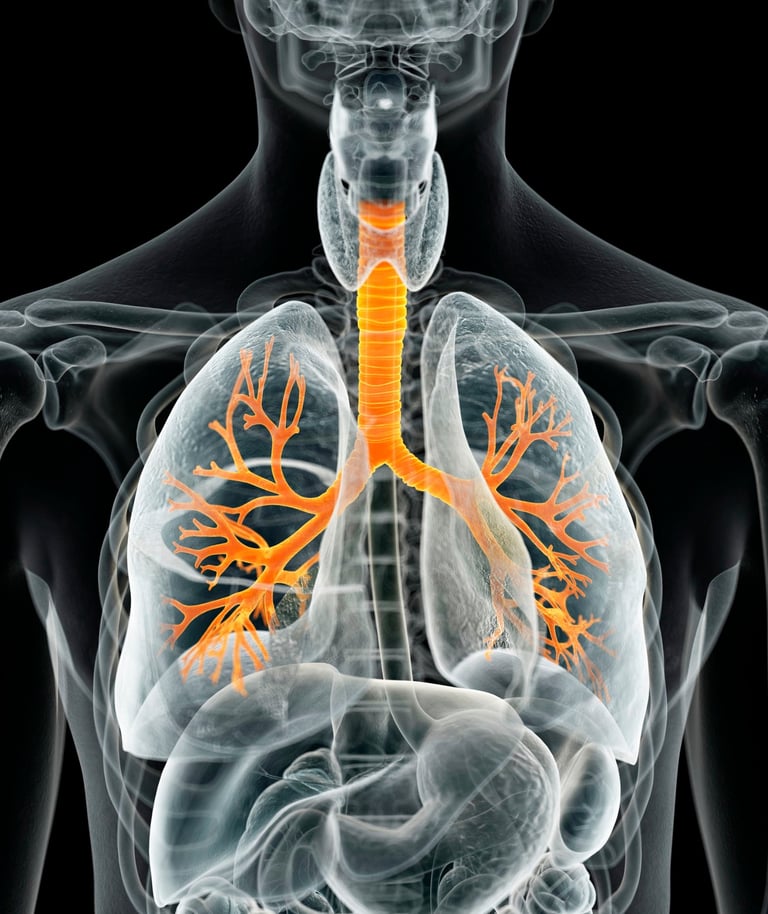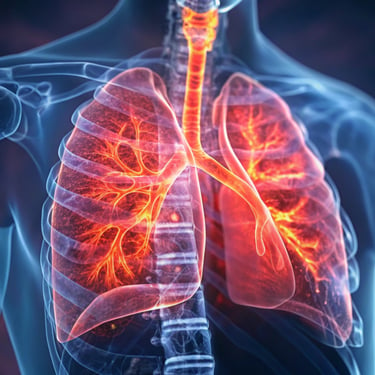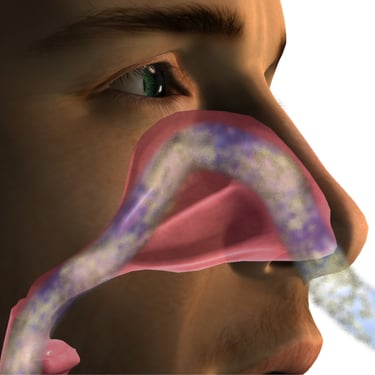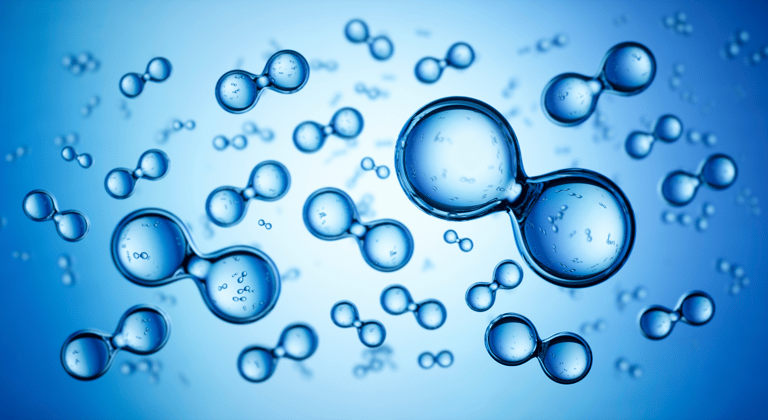
About Respiratory Diseases


Respiratory diseases refer to a range of conditions affecting the human respiratory system, including the nose, throat, trachea, bronchi, and lungs. They are often characterized by inflammation, airway obstruction, and an overactive immune response.
Introduction
Common Respiratory Diseases
Bronchial Asthma
Lung Inflammation




Nasal Allergies / Allergic Rhinitis
A chronic inflammatory disease of the airways. The airways become highly sensitive to various stimuli, leading to recurrent episodes of wheezing, breathlessness, chest tightness, and coughing, particularly at night or in the early morning. Its pathology involves inflammatory cell infiltration, airway smooth muscle spasm, and excessive mucus production.
This includes pneumonia, bronchitis, and bronchiolitis, often triggered by infections (bacterial, viral), allergies, or environmental irritants (e.g., smoke, PM2.5). Symptoms include coughing, sputum production, chest pain, fever, and difficulty breathing.
Inflammation of the nasal mucosa triggered by allergens (e.g., pollen, dust mites, pet dander). Main symptoms include paroxysmal sneezing, watery nasal discharge, nasal itching, and congestion. It is an overdefensive reaction of the immune system to harmless substances.
The commonality among these diseases is that oxidative stress and chronic inflammation are critical pathological foundations driving their onset and progression.
The Role of Hydrogen Gas in Respiratory Diseases
In respiratory diseases, excessively produced harmful free radicals (e.g., ·OH and ONOO⁻) cause oxidative stress, damaging airway cells and lung tissue. Hydrogen can precisely neutralize these most toxic radicals without disrupting beneficial free radicals (e.g., H₂O₂, NO·) involved in normal physiological signaling, thereby effectively reducing oxidative damage.
Selective Antioxidant
Immune Regulation
Hydrogen helps regulate the Th1/Th2 immune balance and suppresses the overactivation of immune cells such as mast cells and eosinophils, thereby alleviating allergic inflammation and airway hyperresponsiveness.
Potent Anti-inflammatory Effect
Hydrogen can inhibit the production and release of various pro-inflammatory cytokines (e.g., TNF-α, IL-6, IL-4, IL-13) and modulate key inflammatory signaling pathways (e.g., NF-κB, NLRP3 inflammasome). This helps reduce airway inflammation, edema, and mucus hypersecretion at the source.
Protective Signaling Pathway Regulation
Hydrogen may activate endogenous antioxidant pathways such as Nrf2, upregulating the expression of the body's own antioxidant enzymes (e.g., superoxide dismutase SOD), and enhancing cellular resistance to oxidative stress.


Hydrogen gas (H₂) is a small molecule gas with selective antioxidant and anti-inflammatory properties. Recent research has revealed its significant potential in alleviating respiratory disease symptoms and supporting lung health.
Mechanism of Action
Hydrogen's protective effects on the cardiovascular system are primarily achieved through the following mechanisms:
Potential Therapeutic Applications
For patients with COPD and chronic bronchitis, hydrogen therapy may help improve lung function, alleviate symptoms of chronic cough and sputum, enhance exercise tolerance, and improve quality of life. In acute infections like pneumonia, it may adjunct conventional treatment by mitigating the inflammatory storm and oxidative damage, thereby accelerating recovery
COPD & Lung Inflammation
Allergic Rhinitis
Using hydrogen-rich water for nasal irrigation or spray allows direct application to the nasal mucosa, providing rapid local relief from symptoms like sneezing, runny nose, and itching. Systemic application (e.g., inhalation or drinking hydrogen-rich water) can modulate the immune system from within. Long-term use may potentially reduce the sensitivity of the nasal mucosa to allergens.
ALI/ARDS
In intensive care, hydrogen inhalation is considered a highly potential adjunctive therapy. Research suggests it may improve oxygenation, protect the lung-blood barrier, reduce pulmonary edema, and lower the risk of ventilator-induced lung injury.
Potential Therapeutic Applications
Bronchial Asthma
Hydrogen inhalation can serve as an adjunctive therapy. It may help rapidly relieve bronchospasm during acute attacks. Long-term use during stable periods could potentially reduce airway inflammation, decrease the frequency and severity of attacks, improve lung function, and possibly reduce reliance on corticosteroid medications.
Pulmonary Fibrosis
Early research indicates that hydrogen may inhibit pro-fibrotic signaling pathways such as TGF-β1/Smad, reducing abnormal collagen deposition, thus holding promise for slowing the progression of pulmonary fibrosis.
Methods of Application
Inhaling a safe concentration of hydrogen gas mixture (typically 1%-4%), allowing hydrogen to enter the bloodstream and throughout the body directly via the alveoli.
Hydrogen Gas Inhalation
Drinking Hydrogen-Rich Water
Absorption through the digestive tract, a convenient method for systemic hydrogen administration.
For topical application, such as nasal spray, directly targeting upper respiratory symptoms.
Hydrogen-Rich Water Spray/ Irrigation
The Role of Amino Acids in Cardiovascular Diseases
Amino acids are the building blocks of proteins and are key molecules for maintaining immune function, antioxidant defense, and tissue repair.


Supporting Immune Function & Anti-inflammation
Potent Antioxidant Defense
Maintaining Respiratory Structure & Barrier
Glutamine is a crucial energy source for immune cells (e.g., lymphocytes, macrophages), essential for maintaining the immune system's normal response to infection. Arginine is involved in the synthesis of nitric oxide (NO), regulating vascular tone and immune responses.
Cysteine is the key precursor for synthesizing the body's most important endogenous antioxidant – Glutathione (GSH). Adequate glutathione levels are crucial for protecting lung epithelial cells from oxidative stress damage (e.g., from smoke, pollutants). Supplementing with N-Acetylcysteine (NAC) is a common clinical strategy for loosening mucus and providing antioxidant effects.
Amino acids are essential components of lung structural proteins (e.g., collagen, elastin) and the respiratory mucosal barrier. For instance, Glycine, Proline, and Lysine are required for collagen synthesis, helping maintain the strength and elasticity of lung tissue.
Key Roles:
Regulating Mucus Secretion & Clearance
Amino acid derivatives like NAC can effectively break the disulfide bonds in mucus, reducing its viscosity and making it easier to expectorate, thereby improving airway patency, especially in patients with COPD and bronchitis.
Application Suggestions
Supplementation with nutrients rich in amino acids (e.g., Glutamine, Cysteine/NAC, Arginine) or through diet may help support respiratory immune function, enhance antioxidant capacity, promote tissue repair, and improve respiratory symptoms.
Respiratory diseases, such as asthma, bronchitis, and allergies, share a core pathology: a vicious cycle of oxidative stress and chronic inflammation. Our health solution is based on two scientific pillars:
Summary


Through its unique selective antioxidant, potent anti-inflammatory, and immune-modulating properties, it targets the core of the pathology, helping to break the vicious cycle, alleviate symptoms, protect lung tissue, and provide synergistic support for conventional treatments.


Serving as building blocks and functional molecules, they fuel the immune system, bolster the body's own antioxidant defenses (glutathione), support respiratory structural integrity, and promote repair.
Hydrogen
Amino Acid
By combining hydrogen products and amino acid nutritional support, we aim to provide you with a multi-target, natural, and safe adjunctive strategy to help you better manage respiratory health, reduce the disease burden, and improve your quality of life.
Bio Young Wellness
Look Young, Feel Young, Stay Young
Contact Us
Bio Young Wellness Sdn. Bhd. @ 2024. All rights reserved.
support@bioyoungwellness.com
Quick Links
Home
About Us
Amino Acid Series
Hydrogen Series
Membership
